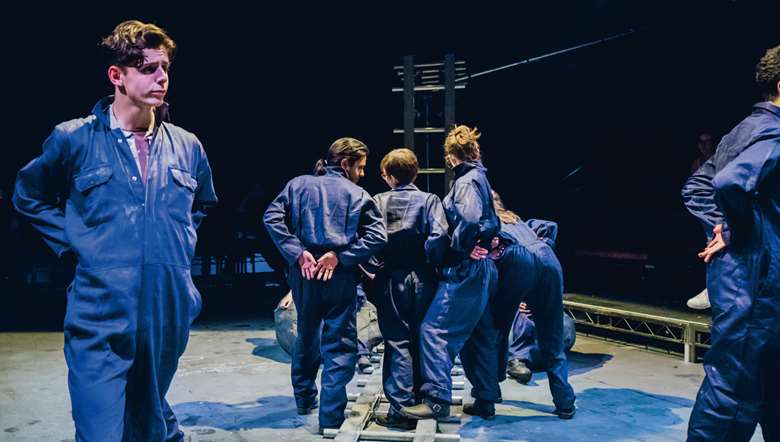Play for performance: Katzenmusik
Chris Sonnex
Sunday, September 1, 2019
Each issue of D&T we bring you a page-to-stage focus on a play for performance with your students, written by someone who's directed it themselves. This issue, Chris Sonnex introduces 18th century cat murder and intrigue in Katzenmusik

Khayam Shah
In 2017, writer Tom Fowler, co-director Romana Flello, 25 young people and I sat down to create Katzenmusik for the Royal Court: a play based on a group of grizzly animal murders that took place in France in the 18th century when a group of young apprentices killed their masters’ cats in protest about their living circumstances.
In the time between those early Katzenmusik rehearsals and its opening in August 2017, the UK had become a different place. Not only had the Brexit bill been passed, but major terrorist attacks had happened in London and Manchester, the Grenfell Tower tragedy took 72 lives, and a series of cat killings took place in Croydon.
Since these seismic events were also present in the play, rehearsals became a way for the cast to digest these horrors, through talking, learning and work shopping. More remarkable though, Fowler hadn't written his play as a reaction, since most of the plot was written prior to the events. I started calling him Nostradamus and begged him to stop writing more. As a playwright he clearly has an innate understanding of the darkness present in the modern world.
While the socio-political issues explored in Katzenmusik couldn't be closer to the issues we face today, the play also explores theatrical cause and effect. Fowler decided to tell the story backwards, to ask ‘how did we get here?’, which acted as a driving narrative force within the play.
Whenever we struggled to understand the numerous complexities during rehearsals and redrafting, we always reminded ourselves that at the heart of the narrative was a murder mystery. Underneath the politics and the fantastical world in which the play was set, we had a very simple story. Who was killing cats? And why?
While the play is angry and political it also contains humour, satire and moments of beautiful tenderness. Without the softer moments in any play, the politics and drama do not pack quite the same punch. This text is a great way of getting young people to debate political and moral issues. But like all theatre, it's also important to have fun with it.
Putting on a show with a large cast of characters can be a daunting task, but the play was created with multi-roling in mind. Characters in the town can be played by anyone regardless of age, race, ability or gender. This idea is highlighted by the choice of costume – a blue boiler suit that can be undone to denote a change in character.
All aspects of design were integral to the play, whether it was sound choice that conveyed the anxious mood that is ever present in the text, or the lights that slowly unveiled a set splattered with UV yellow paint, signifying a massacre.
Set design was particularly significant as it helped us to understand and workshop the themes of the play. For example, in rehearsal we drew a fictional map which helped us to visualise the literal division of the railway track that had The Haves on one side and The Have Nots on the other. The railway line doubled as an imaginary cat playground that allowed us to allude to the cat massacre without showing any disturbing scenes. In doing so, we incorporated ‘cat scratch balls’ that the cast would play around with and sit on. Work shopping and growing the play with a group of young performers was a fun and playful experience.
Alongside its tackling of important socio-political issue such as class, wealth and corruption, the play handles the problems surrounding young people with real heart – exploring why so many feel ignored. It's a piece of writing that, although timeless, taps into the modern political zeitgeist.
Katzenmusik is available for performance courtesy of Nick Hern Books: you can download an extract and arrange a licence from: www.multiplaydrama.co.uk

